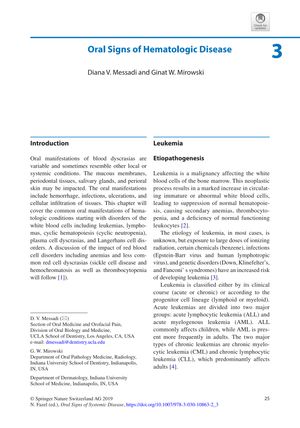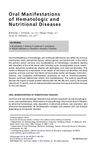Oral Signs of Hematologic Disease
January 2019
in “
Springer eBooks
”

TLDR The conclusion is that different blood diseases cause specific oral symptoms and require varied treatments to manage these symptoms and improve patient health.
The document provides an overview of the oral manifestations associated with various hematologic diseases and offers treatment recommendations. It covers conditions such as leukemia, lymphomas, cyclic neutropenia, plasma cell dyscrasias, multiple myeloma, amyloidosis, Langerhans cell histiocytosis, red blood cell disorders, platelet disorders, thalassemias, megaloblastic anemia, pernicious anemia, iron deficiency anemia, polycythemia vera, and sickle cell disease. Key oral symptoms across these conditions include gingival hypertrophy, petechiae, oral ulcers, periodontal disease, bone pain, osteolytic lesions, mucosal pallor, jaundice, bone deformities, atrophic glossitis, cheilitis, and increased dental caries. Treatments vary but often involve chemotherapy, radiation, hematopoietic stem cell transplantation, nutrient supplementation, phlebotomy, and management of secondary infections. The document emphasizes the importance of maintaining platelet levels above 50,000 platelets per microliter to prevent bleeding and highlights the need for differential diagnosis and appropriate treatment to improve patient outcomes.

